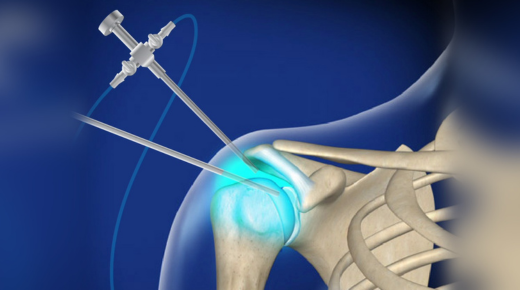1. Understanding Arthroscopic Shoulder Surgery
Arthroscopic shoulder surgery is a minimally invasive procedure used to diagnose and treat shoulder joint problems. Surgeons use a small camera, called an arthroscope, to view the joint and guide surgical instruments, resulting in less tissue damage and quicker recovery.
2. Common Reasons for Arthroscopic Shoulder Surgery
Common reasons for this surgery include rotator cuff tears, shoulder impingement, labral tears, and joint arthritis. These conditions can cause significant pain and limit shoulder function, making surgery a necessary option for many patients.
3. The Procedure: What to Expect
During the procedure, small incisions are made around the shoulder. The arthroscope is inserted to visualize the joint, and miniature surgical tools are used to repair the damaged structures. The surgery usually takes one to two hours and is often performed on an outpatient basis.
4. Post-Surgery Recovery Process
Recovery from arthroscopic shoulder surgery involves several stages. Initially, the arm is immobilized in a sling to protect the shoulder. Physical therapy is then introduced to restore movement and strength. Full recovery can take several months.
5. Potential Complications and Risks
Although arthroscopic shoulder surgery is generally safe, potential complications include infection, nerve damage, stiffness, and persistent pain. Discussing these risks with your surgeon beforehand is crucial for informed consent.
6. Financial Aspects of Surgery
The cost of arthroscopic shoulder surgery can vary widely, depending on factors like the surgeon’s fees, facility charges, and anesthesia costs. Health insurance often covers a significant portion, but out-of-pocket expenses can still be substantial.
7. What Are Settlements?
Settlements refer to agreements reached between a patient and a medical provider or their insurance company, typically after a legal claim related to surgery. Settlements can cover medical expenses, lost wages, and compensation for pain and suffering.
8. Reasons for Pursuing a Settlement
Patients may pursue settlements if they experience complications or unsatisfactory outcomes from their surgery. These settlements can provide financial relief for additional medical treatments, rehabilitation, or loss of income due to extended recovery periods.
9. The Role of Medical Malpractice in Settlements
Medical malpractice can be a factor in settlement cases. If a patient believes that their surgeon was negligent, resulting in harm or additional injury, they may file a malpractice claim. Successful claims can lead to significant settlements.
10. Gathering Evidence for Your Claim
Gathering evidence is critical in pursuing a settlement. This includes medical records, surgical reports, and documentation of complications or additional treatments. Photographs, witness statements, and expert testimony can also support your case.
11. Hiring a Qualified Attorney
A qualified attorney specializing in medical malpractice or personal injury can be invaluable in navigating the settlement process. They can help gather evidence, negotiate with insurance companies, and represent your interests in court if necessary.
12. Understanding the Settlement Process
The settlement process typically involves filing a claim, negotiating with the opposing party, and possibly going to mediation or court. It’s a lengthy process that requires patience and careful documentation of all related expenses and impacts.
13. Settlement Negotiations
Negotiations are a critical part of the settlement process. Both parties will present their evidence and argue their positions. Skilled negotiation can often lead to a fair settlement without the need for a trial.
14. Mediation and Arbitration
Mediation and arbitration are alternative dispute resolution methods that can help settle claims without going to court. Mediation involves a neutral third party to facilitate negotiations, while arbitration involves a binding decision by an arbitrator.
15. Factors Influencing Settlement Amounts
Several factors influence settlement amounts, including the severity of the injury, the impact on the patient’s life, the degree of negligence involved, and the patient’s ability to work. Each case is unique, and settlements are tailored to individual circumstances.
16. Average Settlement Amounts
While settlement amounts vary widely, some data suggest that settlements for arthroscopic shoulder surgery complications can range from thousands to hundreds of thousands of dollars, depending on the specifics of each case.
17. Tax Implications of Settlements
It’s important to understand the tax implications of settlements. In many cases, compensation for medical expenses and pain and suffering is not taxable, but awards for lost wages may be subject to taxes. Consulting a tax professional is advisable.
18. Long-Term Financial Planning
Long-term financial planning is crucial after receiving a settlement. This may involve setting aside funds for future medical expenses, rehabilitation, or investing the money to ensure financial stability.
19. Impact on Insurance Premiums
Settlements can impact your insurance premiums. If the settlement involves a malpractice claim, the healthcare provider’s insurance premiums may increase, and they may face additional scrutiny in their practice.
20. Patient Rights and Protections
Patients have rights and protections under the law, including the right to seek compensation for injuries resulting from medical negligence. Understanding these rights is important in pursuing a fair settlement.
21. The Importance of Documentation
Thorough documentation is essential in the settlement process. Keep detailed records of all medical treatments, communications with healthcare providers, and any financial impacts related to your surgery and recovery.
22. Emotional and Psychological Considerations
The emotional and psychological impact of surgical complications can be significant. Counseling and support groups can be helpful resources for coping with the stress and anxiety related to pursuing a settlement.
23. Success Stories and Lessons Learned
Hearing about success stories from others who have navigated the settlement process can provide valuable insights and hope. Learning from their experiences can help you understand the potential challenges and strategies for a successful outcome.
24. Preparing for the Future
Preparing for the future involves understanding the long-term effects of your surgery and settlement. Continued medical care, rehabilitation, and financial planning are essential steps to ensure ongoing well-being and stability.
25. Final Thoughts on Arthroscopic Shoulder Surgery Settlements
Navigating the complexities of arthroscopic shoulder surgery settlements requires knowledge, patience, and expert support. By understanding the process, seeking qualified legal assistance, and maintaining thorough documentation, you can work towards a fair settlement and a better future.




